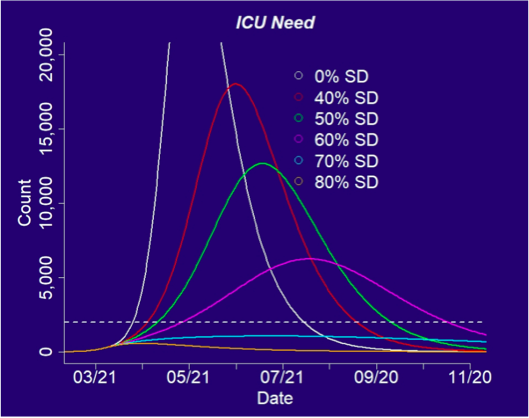In our current coronavirus pandemic, public policy has been driven largely by standard epidemiological models, which predict the spread and lethality of the disease based on a few well-understood parameters. Restrictive business, economic, and social measures have been put in place based on those predictions.
We’ve been here before.
According to historian Norman Cantor, in his In the Wake of the Plague, “After the Black Death had raged for more than a year some cities came up with a preventative measure that did some good – or so it was claimed – through the strict quarantining of areas of the city where the incidence of pestilence was heavy. What they really needed to do was quarantine rodents, but human quarantine measures apparently were effective in some town – or so the town officials, having already disturbed social life, asserted, to make their quarantine policy appear effective.”
Because they are now responsible for the tremendous economic and social cost now being inflicted in the name of limiting the virus’s effects, the epidemic modelers, the public health officials, and the elected officials all have strong incentives to claim that the quarantine measures sharply limit R0, or the rate of spread.
They may or may not be correct, but the burden of proof is on them, and they need to be rigorously challenged to show that.
It was just such public pressure that led the Polis administration to release the model being used here in Colorado, after the Denver Post reported that the number of predicted deaths was somewhere between 340 and 33,000, a range practically useless for decision-making.
The briefing and slides were quite revealing. First, all of the input parameters are continually being adjusted based on the actual field data from here in the state, and that that’s how we want models to operate. (If you want models that fail to adjust to reflect actual conditions on the ground, then climatology is your game, not epidemiology.)
More critically, looking at the graph, it’s apparent why the range of deaths is so broad. With the then-newly-imposed gubernatorial restrictions, the modelers estimated that we would be in the 60% – 80% range of social distancing, which is where the expected number of ICU admissions falls below capacity:
 With this in mind, we should be prepared – as the press has not – to ask several key questions, among them:
With this in mind, we should be prepared – as the press has not – to ask several key questions, among them:
- How precise is the quantitative link between the quarantine measures and lowering social interactions?
- How precise is the quantitative link between lowering social interaction and lowering R0?
- All of the parameters (including the ones not shown here) have error bars? This may be the most likely statistical scenario given what we know, but are there other reasonably likely combinations that might show similar reductions in ICU admissions with less social distancing?
Note that none of this necessarily means that the modelers and public health officials were wrong to make the recommendations they did. These are just normal, routine modeling questions they should have to answer. We should also be able to ask them without moving the goalposts around.
And make no mistake, the burden of proof lies on them.
One of th![]() e most dangerous aspects of the governmental reaction to the virus is the sense that there are no rules, or at least, that the rules are extremely flexible, and nobody really knows where the boundary lines are.
e most dangerous aspects of the governmental reaction to the virus is the sense that there are no rules, or at least, that the rules are extremely flexible, and nobody really knows where the boundary lines are.
Fluidity of authority historically gives entirely too much power to those willing and able to establish and enforce ad hoc rules of behavior on society. Very quickly, we can become habituated to checking the paper every morning, or the press conference every evening, for the latest prohibitions.
This is the Versailles Court Model of political power – set the rules, but keep changing them. It works even better for informal social rules. For example, the left has been ruthlessly successful in exploiting it to police speech about race, gender, and identity.
So when the governor said last week that he saw executive power as a “dimmer switch” on social interaction, and that the coronavirus will now be a permanent feature of our lives, it should have set off alarm bells. It could easily lead to the imposition of a permanent emergency with attendant restrictions that can be changed to fine-tune that SD number and therefore R0 as needed.
Not only is that politically dangerous, it’s not even supported by the modeling at this point. Because we simply don’t have that kind of finely calibrated relationship between executive action and ICU admissions, one that we’re sure won’t change over time. What’s more, the governor chose 80% as his benchmark, something that is far, far below the 67% or so required to keep even the current peak below hospital capacity.
In short, the governor is using the most extreme reading of his own experts’ modeling, and over-selling that model’s precision, to propose possibly permanent, arbitrary social controls that quite likely won’t have the intended epidemiological effect.
The question is, will they have Polis’s desired political effect?
Joshua Sharf is a senior fellow at the Independence Institute in Denver.


